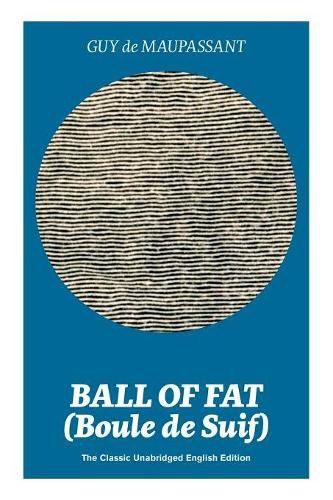Readings Newsletter
Become a Readings Member to make your shopping experience even easier.
Sign in or sign up for free!
You’re not far away from qualifying for FREE standard shipping within Australia
You’ve qualified for FREE standard shipping within Australia
The cart is loading…






This title is printed to order. This book may have been self-published. If so, we cannot guarantee the quality of the content. In the main most books will have gone through the editing process however some may not. We therefore suggest that you be aware of this before ordering this book. If in doubt check either the author or publisher’s details as we are unable to accept any returns unless they are faulty. Please contact us if you have any questions.
Boule de Suif (translated variously as Dumpling , Butterball , Ball of Fat or Ball of Lard ) is a famous short story by the late-19th century French writer Guy de Maupassant. It is arguably his most famous short story and is the title story for his collection on the Franco-Prussian War, entitled Boule de Suif et Autres Contes de la Guerre ( Dumpling and Other Stories of the War ). The story is set in the Franco-Prussian War and follows a group of French residents of Rouen, recently occupied by the Prussian army. The ten travellers decide, for various reasons, to leave Rouen and flee to Le Havre in a stagecoach. Sharing the carriage are Boule de Suif or Butterball , a prostitute whose real name is Elisabeth Rousset; the strict Democrat Cornudet; a shop-owning couple from the petty bourgeoisie, M. and Mme. Loiseau; a wealthy upper-bourgeoisie factory-owner and his wife, M. and Mme. Carr -Lamadon; the Comte and Comtesse of Br ville; and two nuns. Thus, the carriage constitutes a microcosm of French society, representing different parts of the French population during the late 19th century. Guy de Maupassant (1850-1893) was a popular French writer, considered one of the fathers of the modern short story and one of the form’s finest exponents. Maupassant was a prot g of Flaubert and his stories are characterized by economy of style and efficient, effortless d nouements (outcomes). He wrote some 300 short stories, six novels, three travel books, and one volume of verse. His first published story, Boule de Suif ( Ball of Fat ), is often considered his masterpiece.
$9.00 standard shipping within Australia
FREE standard shipping within Australia for orders over $100.00
Express & International shipping calculated at checkout
This title is printed to order. This book may have been self-published. If so, we cannot guarantee the quality of the content. In the main most books will have gone through the editing process however some may not. We therefore suggest that you be aware of this before ordering this book. If in doubt check either the author or publisher’s details as we are unable to accept any returns unless they are faulty. Please contact us if you have any questions.
Boule de Suif (translated variously as Dumpling , Butterball , Ball of Fat or Ball of Lard ) is a famous short story by the late-19th century French writer Guy de Maupassant. It is arguably his most famous short story and is the title story for his collection on the Franco-Prussian War, entitled Boule de Suif et Autres Contes de la Guerre ( Dumpling and Other Stories of the War ). The story is set in the Franco-Prussian War and follows a group of French residents of Rouen, recently occupied by the Prussian army. The ten travellers decide, for various reasons, to leave Rouen and flee to Le Havre in a stagecoach. Sharing the carriage are Boule de Suif or Butterball , a prostitute whose real name is Elisabeth Rousset; the strict Democrat Cornudet; a shop-owning couple from the petty bourgeoisie, M. and Mme. Loiseau; a wealthy upper-bourgeoisie factory-owner and his wife, M. and Mme. Carr -Lamadon; the Comte and Comtesse of Br ville; and two nuns. Thus, the carriage constitutes a microcosm of French society, representing different parts of the French population during the late 19th century. Guy de Maupassant (1850-1893) was a popular French writer, considered one of the fathers of the modern short story and one of the form’s finest exponents. Maupassant was a prot g of Flaubert and his stories are characterized by economy of style and efficient, effortless d nouements (outcomes). He wrote some 300 short stories, six novels, three travel books, and one volume of verse. His first published story, Boule de Suif ( Ball of Fat ), is often considered his masterpiece.